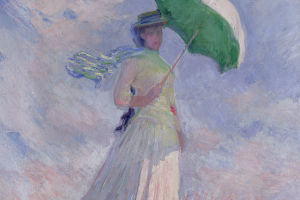Have you ever experienced a dream that felt so real, yet so bizarre, that it left you questioning the boundaries between the real world and the dream world?
If so, then you've experienced the very essence of surrealism, an art movement that challenges our perceptions of reality.
Surrealism, born in the early 20th century, focused on breaking away from traditional artistic conventions by embracing the illogical, the irrational, and the dreamlike. But what does it mean to blur the lines between dreams and reality in art? In this article, we will explore how surrealist artists used the subconscious mind, dreams, and irrationality to create artworks that continue to captivate audiences around the world.
The Roots of Surrealism: Freudian Influence
Surrealism didn't just emerge out of thin air; it was heavily influenced by the works of psychoanalyst Sigmund Freud, who believed that the unconscious mind plays a significant role in shaping human behavior and emotions.
Freud's theories on dreams, repression, and the role of the subconscious mind in daily life resonated deeply with artists, particularly the Surrealists, who were eager to tap into the hidden realms of the human psyche.
In essence, surrealist artists sought to express the irrational and unconscious mind in their works. They believed that the unconscious, or the realm of dreams, could be just as valuable a source of artistic expression as the conscious, logical world. Through techniques like free association, automatic writing, and dream analysis, these artists were able to bypass the rational thought processes and let their subconscious guide their creative expression.
The result was a rich and often bizarre collection of paintings, sculptures, and other forms of art that felt more like a visual representation of a dream than anything grounded in reality.
The Dream World: Blurring the Boundaries
One of the key tenets of surrealism was the idea of merging the dream world with reality. Surrealist artists wanted to depict a world where dreamlike scenarios and rational logic coexist, often placing strange or impossible elements together in a single image.
Salvador Dalí, perhaps the most iconic of surrealist artists, was a master of this technique. His painting The Persistence of Memory features melting clocks draped over branches and rocks, evoking a sense of time that seems fluid and distorted—much like how we experience time in a dream.
In surrealism, the bizarre and the impossible are not just fanciful imaginings; they're a legitimate way of exploring human emotions and the subconscious. Through distorted forms, unusual combinations of objects, and dreamlike landscapes, surrealist artists challenged viewers to question the familiar, and to interpret the world through a different lens.
The idea is that, much like a dream, the art itself is not bound by the rules of the logical world; it operates on its own terms, governed by the whims of the unconscious mind.
Exploring the Subconscious: Techniques of Surrealist Creation
Surrealist artists employed a variety of techniques to tap into the subconscious mind and bring their dreamlike visions to life. One such technique was automatism, a process where artists allowed their hands to move freely across the canvas or paper without consciously controlling their actions.
This unfiltered, spontaneous form of art allowed the subconscious to take over, resulting in abstract or unexpected shapes and patterns that were imbued with deep emotional meaning.
Another key technique was exquisite corpse, a collaborative drawing game in which several artists would contribute to a single image, each drawing a part of it without seeing what the others had done. The result was often a disjointed and surreal creation, where multiple viewpoints and styles collided to create a unified yet strange composition.
These techniques weren't just about creating visually strange works of art—they were about embracing the irrational, the chaotic, and the unspoken. By doing so, surrealist artists hoped to break free from the constraints of reality and explore the hidden recesses of the mind.
Notable Surrealist Artists and Their Works
While surrealism was a collective movement, certain artists are still widely associated with its core ideals. Salvador Dalí, with his melting clocks and bizarre landscapes, remains the most famous surrealist.
His work The Elephants, with its towering, spindly-legged elephants and dreamlike symbolism, exemplifies the surrealist quest to combine the strange with the familiar.
Another key figure in surrealism was René Magritte. Known for his playful yet unsettling paintings, such as The Treachery of Images, which features a pipe and the phrase "This is not a pipe," Magritte questioned the relationship between reality and representation. His work often challenged our perceptions, forcing us to confront the discrepancy between what we see and what we understand.
Other notable surrealists included Max Ernst, who used techniques like frottage and collage to create dreamlike landscapes, and Frida Kahlo, whose deeply personal and symbolic works often blended elements of fantasy and reality to explore pain, identity, and self-expression.
Impact of Surrealism: Legacy and Influence
Surrealism's influence has endured well beyond its early days. Its impact can still be seen in contemporary art, film, literature, and even advertising. The movement helped to usher in a new era of creativity, one that embraced the absurd, the irrational, and the fantastical.
In modern times, surrealism has inspired a variety of artists, from those in the pop art movement to filmmakers like David Lynch, whose work often embodies surrealistic elements in its exploration of the unconscious mind and the blurring of reality and fantasy. The work of contemporary digital artists and animators also often draws on surrealist techniques, playing with dreamlike imagery and unconventional storytelling to create surreal experiences for viewers.
Moreover, surrealism's exploration of the subconscious continues to influence psychological and philosophical discourse, encouraging individuals to look beyond the surface of reality and delve deeper into their internal worlds.
Conclusion: The Endless Exploration of the Mind
Surrealism, as an art movement, remains one of the most innovative and influential in the history of art. By embracing the irrational and the dreamlike, surrealist artists created works that pushed the boundaries of artistic expression and challenged how we view reality itself.
Their ability to blend the worlds of dreams and reality through vivid and often bizarre imagery opened new doors for creative freedom and exploration.
Next time you find yourself gazing at a surrealist painting, take a moment to reflect on its deeper meanings. What emotions does it evoke? What parts of the subconscious does it reveal? For surrealists, art wasn't just about painting a picture—it was about uncovering the hidden truths of the mind, and through their work, they continue to invite us to explore the surreal and mysterious landscapes within us all.


